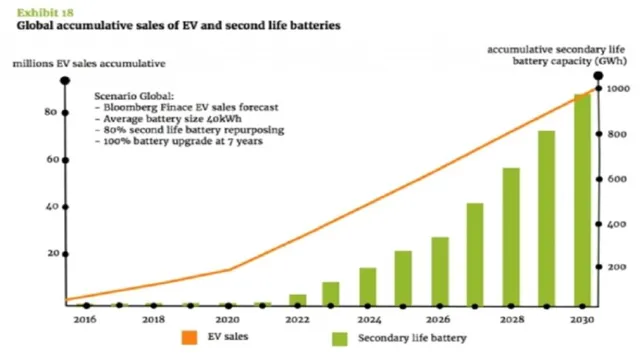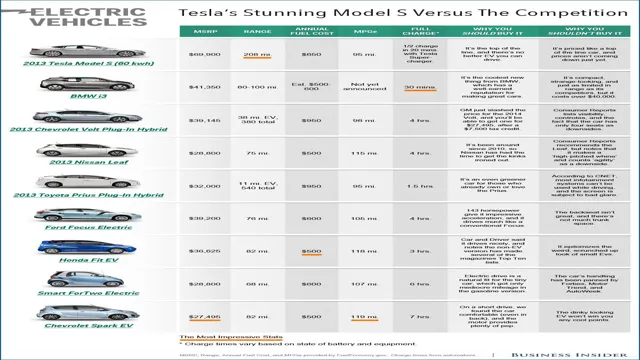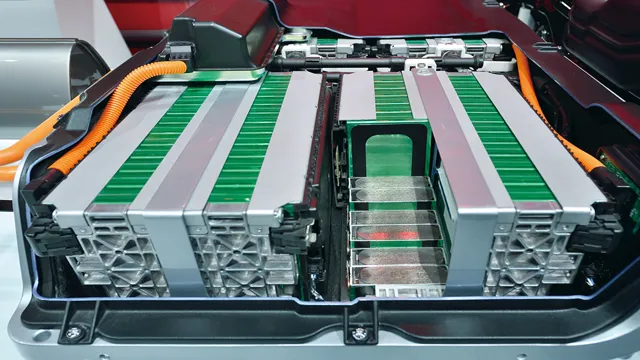Breaking Down Electric Car Battery Cycles: Maximizing Performance and Longevity
Electric car batteries, the heart and soul of electric vehicles, are a major contributor to the increase in electric vehicle sales. However, there are many questions that arise regarding the lifespan of electric car batteries, the most important of which is its cycle. What exactly does “battery cycles” mean, and how do they impact the life and performance of electric car batteries? To put it simply, a cycle is the amount of times a battery can charge and discharge before its performance begins to degrade.
It’s a crucial aspect of electric cars, and the number of cycles can differ depending on the battery. In general, the more cycles a battery can handle, the longer its lifespan. But it’s not that simple.
There are many factors that can affect the cycle life of an electric car battery. Temperature extremes, charging habits, and storage conditions are just a few factors that can impact the battery’s cycle life. And while many electric cars come with warranties that cover battery replacement, it’s crucial to understand how to maintain and extend the life of your electric car battery.
In this blog, we’ll explore the ins and outs of electric car battery cycles, including the different types of cycles, factors that can impact their lifespan, and tips to ensure you get the most out of your battery. Whether you’re a prospective electric car owner or simply interested in the technology behind it, understanding battery cycles is a crucial aspect of owning an electric car. So, let’s dive in and explore the world of electric car batteries, one cycle at a time.
What are battery cycles?
Electric car battery cycles refer to the lifespan of a battery and the number of times it can be charged and discharged before it starts to lose its capacity. As a battery is used, it slowly degrades over time which affects the overall performance and range of an electric vehicle. Manufacturers generally specify the number of cycles that a battery is expected to last before it needs to be replaced.
A cycle represents a complete drain of the battery followed by a full recharge. Over the course of a battery’s life, the number of cycles it can undergo will decrease, and the battery will hold less energy as it ages. This is why it’s important to consider the battery’s health and the number of miles driven before purchasing a used electric car.
Despite these limitations, modern batteries are becoming more efficient and durable, offering longer lifetimes and better performance, ensuring electric cars are a viable and sustainable option.
Explaining the concept of battery cycles
Battery cycles refer to the number of times a battery can be charged and discharged before its performance starts to degrade. Every time a battery is charged and then discharged, it completes a cycle. Most rechargeable batteries, such as those found in laptops or smartphones, have a certain number of cycles before they start to deteriorate.
This means that over time, their ability to hold a charge decreases, and they may not last as long as they used to. It’s important to understand the concept of battery cycles, especially if you use devices that rely heavily on battery power. By being aware of the number of cycles your battery has gone through, you can take steps to prolong its lifespan and ensure that your device lasts for as long as possible.
How do electric car batteries age?
Electric car battery cycles play a vital role in the aging of an electric car battery. Every time an electric car battery charges and discharges, it goes through one cycle. As the number of cycles increases, the battery’s overall capacity to hold a charge decreases, and its ability to perform optimally declines.
The typical lifespan of an electric car battery is determined by the number of cycles it can undergo before reaching an 80% state of health. Factors such as temperature, driving style, and battery maintenance can also affect the battery’s lifespan. Therefore, it is essential to consider these factors when purchasing an electric vehicle to maximize its battery performance and longevity.
While the battery lifespan varies, it is safe to say that electric car battery technology is constantly evolving, making it more durable and efficient than ever before.
Discussing the factors affecting battery life
Electric car batteries are a fascinating technological innovation, but they do come with some challenges. One of these challenges is battery aging and the impact it has on battery life. Several factors contribute to the aging process of electric car batteries, including temperature, charging and discharging patterns, and the chemistry of the battery cells.
Batteries degrade over time, and as they degrade, they become less efficient at storing and delivering energy, ultimately leading to a shorter lifespan. The good news is that advancements in battery technology are helping to mitigate some of these issues. For example, manufacturers are implementing improved chemistry and temperature management systems, which will help slow down the aging process.
Additionally, new charging technologies that reduce battery wear and tear are being introduced. While electric car batteries may undergo some changes over time, there are steps drivers can take to ensure that their batteries remain healthy for as long as possible. By being mindful of charging habits and driving conditions, electric car owners can help ensure that their batteries stay in top condition and continue to provide reliable, efficient performance for years to come.
Examples of battery life in popular electric cars
Electric car batteries are a crucial component of any electric vehicle, as they determine the range and performance of the car. The lifespan of an electric car battery is a common concern for potential buyers, as the cost of replacing a battery can be quite significant. How much an electric car battery ages depends on various factors such as temperature, charging frequency, and driving habits.
The good news is most electric cars are equipped with batteries that can last for many years, even up to a decade, before they need to be replaced. For example, Teslas have an estimated battery life of between 300,000 to 500,000 miles, or about 10-15 years, while other electric cars like the Nissan Leaf have a battery life of around 8-12 years. One important consideration is that degradation of the battery over time is normal but also depends on how well it is cared for.
Regular maintenance and careful charging can help to extend the lifespan of an electric car battery and ensure it retains its capacity for as long as possible.
How to maintain your electric car battery
If you want to maintain your electric car battery, it’s important to understand the concept of battery cycles. Simply put, a cycle refers to the full charge and discharge of a battery. The more cycles your battery goes through, the more its capacity will degrade over time, eventually leading to a shorter driving range.
To make the most out of your battery, it’s best to keep it within the range of 20-80% charge instead of letting it drop to 0% and charging it to 100% every time. This will reduce the number of cycles your battery goes through and extend its lifespan. Additionally, avoid exposing your battery to extreme temperatures and keep it at a cool, dry place when not in use.
By following these simple tips, you can maximize the performance of your electric car battery and enjoy longer drives for years to come.
Tips for optimizing battery health and longevity
Electric car battery Electric car batteries are the heart of any electric vehicle. It is very crucial to maintain the battery of your electric car because it impacts the vehicle’s overall performance and longevity. The first thing you need to do is to keep your battery charged between 20% to 80%.
Avoid draining the battery to 0% or charging it to 100% as it can reduce its lifespan. Secondly, always use the charger provided by the manufacturer to charge your car battery. Using a third-party charger can damage the battery and put you and your car at risk.
Thirdly, avoid exposing your car to extreme temperature conditions. This includes avoiding parking your car under direct sunlight for extended periods or driving in extremely hot or cold weather. Finally, it is necessary to keep an eye on the battery’s health, and you can do this by checking it regularly using the car’s software.
By implementing these tips, you can ensure the longevity of your electric car battery, making it last longer and run efficiently without needing a replacement.
Comparing battery cycle lifespan: EV vs ICE cars
Electric car battery cycles can significantly impact the longevity of a vehicle. Compared to ICE cars, electric vehicles tend to have a longer lifespan because their batteries can last up to 200,000 miles or more without needing a replacement. This is because electric car batteries are designed to last longer and can be recharged many times without reducing their overall capacity.
In contrast, ICE car batteries tend to fail after about five years or so, which can significantly decrease the lifespan of the vehicle. Additionally, electric car batteries can be recycled, which helps reduce their environmental impact and supports sustainability efforts. As more people choose electric vehicles, it will be interesting to see how battery technology evolves to further extend their lifespan and support the growth of renewable energy sources.
Data-driven analysis on battery cycle differences
When it comes to comparing battery cycle lifespan between electric vehicles (EVs) versus internal combustion engine (ICE) cars, there are various factors to consider. While EVs are often touted as having longer-lasting batteries, the truth is not so straightforward. It ultimately depends on how well the battery is maintained, the vehicle’s driving patterns, and the specific climate conditions.
However, data analysis has shown that, on average, EV batteries tend to have a longer lifespan than ICE car batteries. This is because EV batteries are typically designed to ensure a full discharge and recharge, while ICE car batteries are relied upon less often, resulting in fewer cycles. It’s essential to note that battery lifespan can vary significantly depending on the make and model of the vehicle.
For instance, some EVs may have batteries that last longer than others, but this may not be the same for ICE cars. Therefore, it’s vital to consider individual vehicle performance and usage when comparing battery cycle differences between EVs and ICE cars.
The future of electric car batteries
When it comes to the future of electric car batteries, one major area of focus is increasing the number of cycles they can endure. Currently, lithium-ion batteries used in electric vehicles are designed to last for around 1000 cycles before their performance begins to decline. However, researchers are working on ways to increase this number to as many as 5000 cycles, which would significantly extend the lifespan of these batteries and make them even more cost-effective.
One potential solution being explored is the use of solid-state batteries, which offer several advantages over traditional liquid-based batteries. For example, these batteries are safer and have higher energy density, meaning they can store more energy in a smaller package. While there is still a lot of work to be done before solid-state batteries become a viable option for electric cars, the potential benefits are promising and could lead to major improvements in the industry.
Innovations in battery tech and their potential impact
As the world shifts towards a more sustainable future, innovations in battery technology hold enormous potential for transforming multiple industries, specific to electric cars. With traditional Lithium-ion batteries having already proven their worth, battery manufacturers are increasingly turning towards solid-state batteries that offer a higher energy density, faster charging time, and longer lifespan. These batteries use solid electrodes and electrolytes instead of the liquid or gel electrolytes found in Li-ion batteries, significantly reducing the risk of leakage, overheating, and explosions.
Besides offering benefits such as affordability, efficiency, and versatility, the new generation solid-state batteries bring lower carbon emissions and are environmentally friendlier. If successful, the implementation of these next-generation batteries could change the electric car industry forever, making EVs even more popular.
Conclusion
In conclusion, the cycles of electric car batteries are like the ups and downs of a rollercoaster ride. Just as the ride may move through peaks and valleys, the battery experiences charging and discharging cycles. However, with advancements in technology, we can strive towards smoother and more efficient cycles, ensuring an exhilarating ride for electric car enthusiasts everywhere!”
FAQs
What is an electric car battery cycle?
An electric car battery cycle is the process of charging and discharging an electric car battery.
How many cycles can an electric car battery handle?
An electric car battery can handle around 1000 cycles, which is roughly equivalent to 100,000 miles.
What happens when an electric car battery reaches the end of its cycle life?
When an electric car battery reaches the end of its cycle life, it will start to lose its capacity to hold a charge, and it will need to be replaced.
Can the number of cycles an electric car battery handle be increased?
Yes, the number of cycles an electric car battery can handle can be increased by using a battery management system that can optimize the charging and discharging process.






